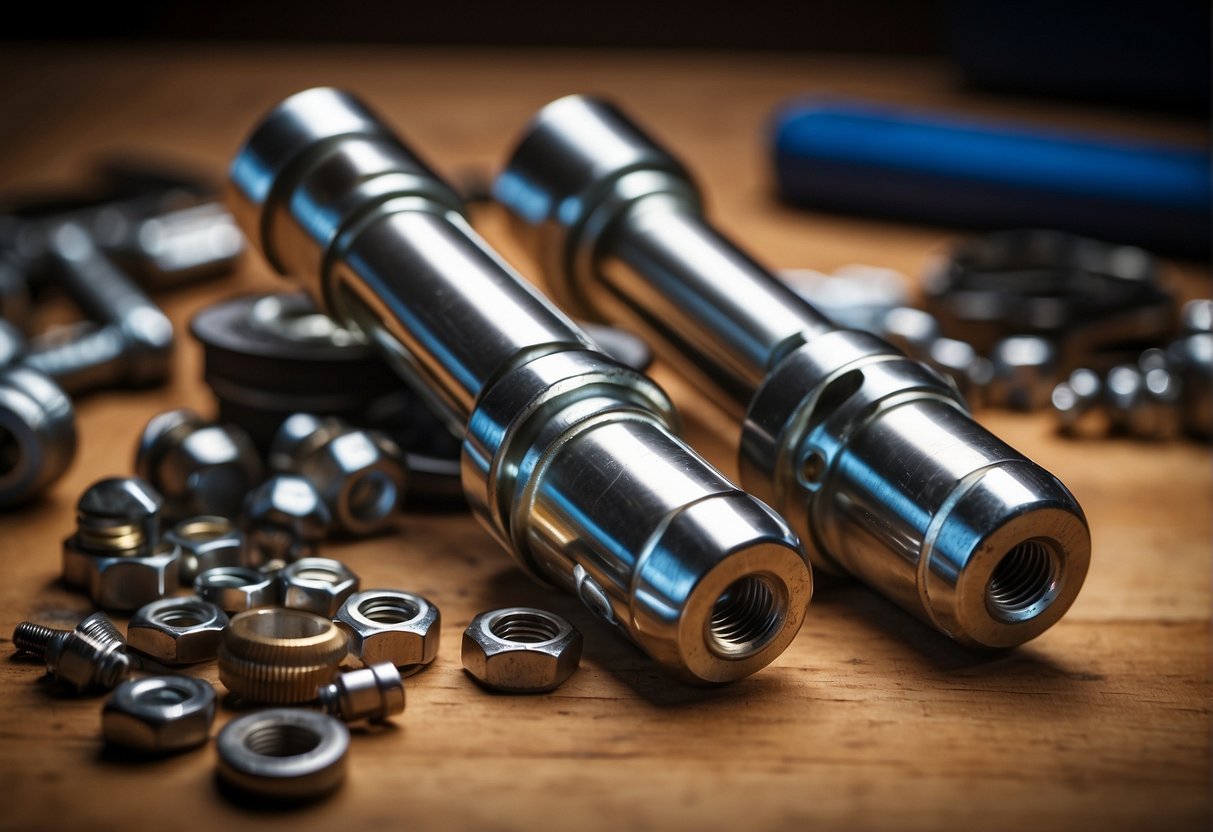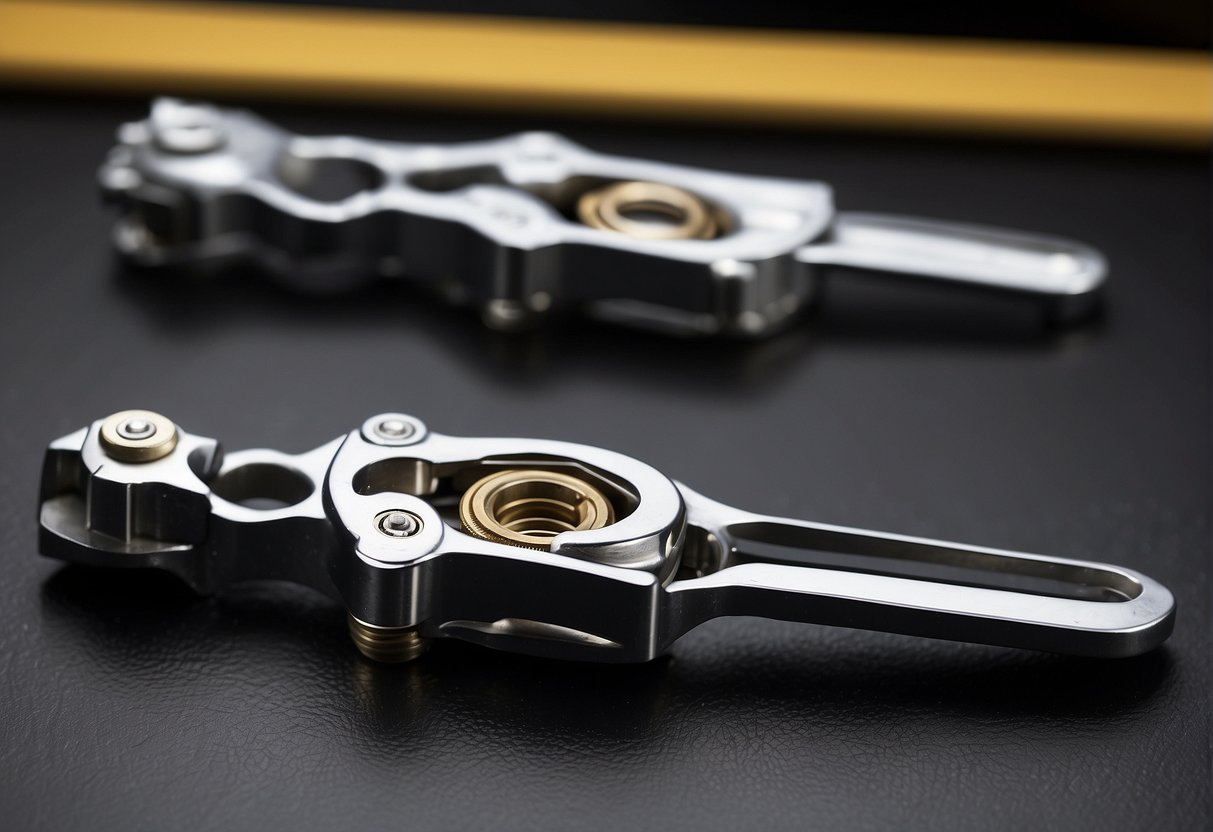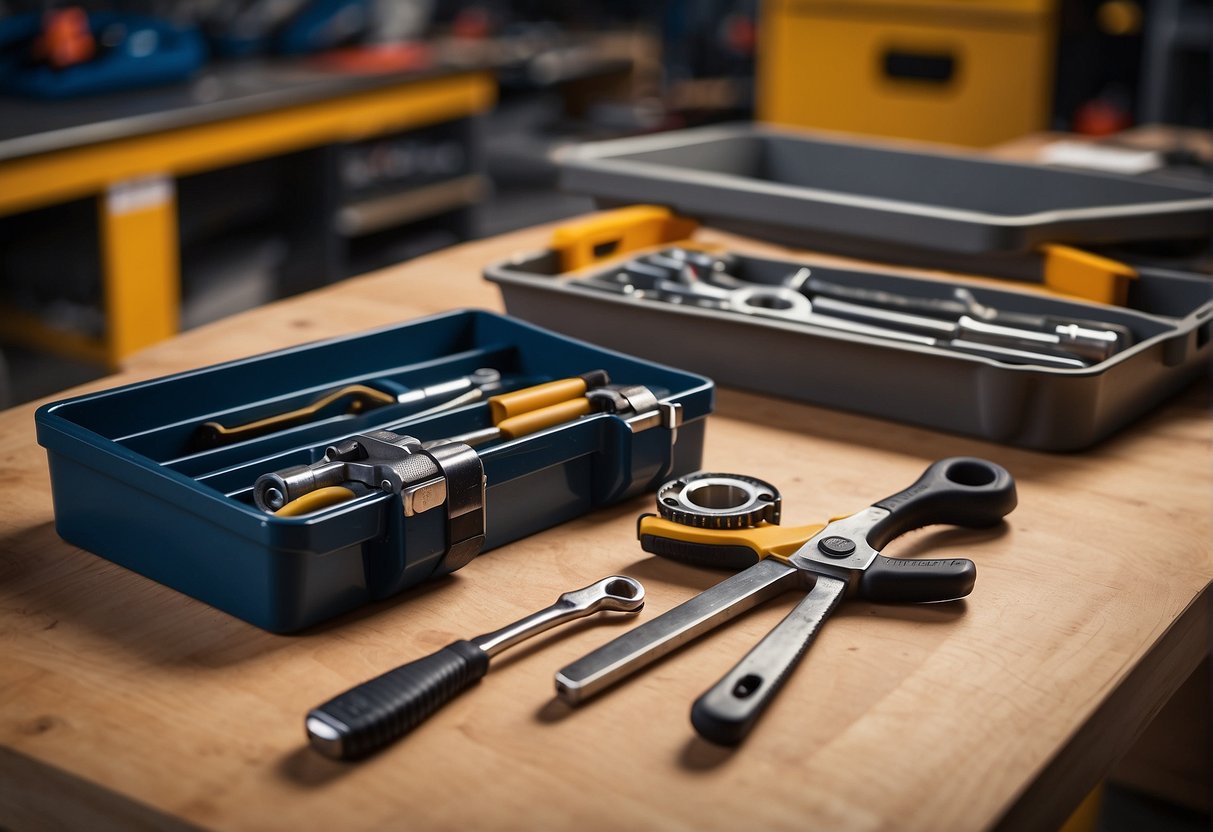When it comes to choosing a ratchet, there are a few key factors to consider. One of the most important decisions you’ll need to make is whether to go with a 3/8 or 1/4 inch drive. While both sizes have their advantages and disadvantages, the right choice ultimately depends on your specific needs and preferences.
Understanding ratchet sizes is essential for selecting the right tool for your job. A 3/8 inch drive is generally considered the most versatile option, as it can handle a wide range of socket sizes and is suitable for both light and heavy-duty applications. On the other hand, a 1/4 inch drive is more precise and better suited for smaller jobs where space is limited. However, it may not provide enough torque for larger tasks.
Comparing torque and application is another important consideration when choosing between a 3/8 and 1/4 inch ratchet. While a 1/4 inch drive may be more precise, a 3/8 inch drive can provide more torque, making it better suited for heavy-duty applications. Ultimately, the right choice depends on the type of work you’ll be doing and the level of precision and torque required.
Key Takeaways
- Understanding ratchet sizes is crucial for selecting the right tool for your job.
- A 3/8 inch drive is generally considered the most versatile option, while a 1/4 inch drive is more precise.
- When choosing between a 3/8 and 1/4 inch ratchet, it’s important to consider the torque and application requirements of your specific job.
Understanding Ratchet Sizes
As a mechanic, I know that choosing the right ratchet size is crucial for getting the job done efficiently. There are two primary ratchet sizes: 3/8 inch and 1/4 inch. Each ratchet size has its own unique set of advantages and disadvantages, which I will discuss in this section.
3/8 Inch Drive
The 3/8 inch drive is the most commonly used ratchet size in the automotive industry. It is versatile, and it can be used for a wide range of applications. With a 3/8 inch drive, you can drive sockets of all sizes, and it is big enough to apply quite a lot of force, but not too big to fit into tight spaces.
The 3/8 inch drive ratchet is ideal for working on mid-sized bolts and nuts. It is perfect for general use on a car, and it is the go-to size for most mechanics. The 3/8 inch drive is also available in a variety of lengths, making it easy to find the perfect ratchet for your needs.
1/4 Inch Drive
The 1/4 inch drive ratchet is smaller than the 3/8 inch drive ratchet. It is used for smaller sockets and precision work. The 1/4 inch drive is useful for dismantling individual components on the bench. It is also ideal for working on small bolts and nuts that are difficult to access.
The 1/4 inch drive ratchet is perfect for working on electronics, small engines, and other precision work. It is also a great choice for hobbyists and DIYers who do not need to work on larger bolts and nuts.
In conclusion, choosing the right ratchet size is crucial for getting the job done efficiently. The 3/8 inch drive ratchet is the most commonly used ratchet size in the automotive industry, while the 1/4 inch drive ratchet is ideal for precision work and smaller bolts and nuts.
Comparing Torque and Application
Torque Capabilities
When it comes to torque, the 3/8 ratchet is generally more powerful than the 1/4 ratchet. This is because the 3/8 ratchet has a larger drive size and can therefore generate more torque. According to Tool Box Buzz, the maximum torque for a 3/8 ratchet can be up to 35 ft-lbs, while the maximum torque for a 1/4 ratchet is usually around 20 ft-lbs.
It’s important to note that torque is not the only factor to consider when choosing between a 3/8 and 1/4 ratchet. The application also plays a significant role.
Common Applications
The 1/4 ratchet is generally used for smaller fasteners and in tight spaces where a larger ratchet won’t fit. It’s also useful for delicate work where too much torque can damage the fastener or the surrounding components. For example, when working on electronics or other delicate equipment, a 1/4 ratchet is often the tool of choice.
On the other hand, the 3/8 ratchet is more commonly used for larger fasteners and tougher applications. It’s often used in automotive work, such as tightening or loosening bolts on an engine. In these applications, the extra torque provided by the 3/8 ratchet can be essential.
It’s worth noting that a torque wrench is always the best tool for precise torque control. However, a ratchet can be a useful tool for quickly tightening or loosening fasteners, especially in situations where a torque wrench is not available.
Overall, when choosing between a 3/8 and 1/4 ratchet, it’s important to consider the torque capabilities and the specific application. While the 3/8 ratchet is generally more powerful, the 1/4 ratchet can be more useful in certain situations.
Design and Mechanism Details
Ratchet Mechanism
When it comes to ratchets, the mechanism is a crucial factor to consider. The mechanism is what makes a ratchet a ratchet, and it determines how it works. Ratchets work by using a gear and pawl system that allows the ratchet to turn in one direction while locking in the other direction. The gear is attached to the handle, and the pawl sits on the ratchet head. The pawl clicks into the gear teeth when the ratchet is turned in one direction, but it slips over the teeth when the ratchet is turned in the opposite direction. The number of teeth on the gear determines the precision of the ratchet.
Handle Design
Another important factor to consider when choosing between 3/8 and 1/4 ratchets is the handle design. The handle is what you grip when using the ratchet, and it can make a big difference in how comfortable and easy to use the ratchet is. A good handle should be ergonomic, with a comfortable grip that allows you to apply force without slipping.
In terms of handle size, 3/8 ratchets generally have larger handles than 1/4 ratchets. This is because 3/8 ratchets are designed to be used with larger sockets, which require more force to turn. A larger handle provides more leverage, making it easier to apply the necessary force. However, larger handles can also be more cumbersome to use in tight spaces.
In conclusion, the mechanism and handle design are two important factors to consider when choosing between 3/8 and 1/4 ratchets. The mechanism determines the precision of the ratchet, while the handle design affects comfort and ease of use. Ultimately, the decision between 3/8 and 1/4 ratchets will depend on the specific needs of the user, as well as the types of sockets and tasks that will be used with the ratchet.
Toolbox Essentials
When it comes to building a tool kit, there are some essentials that every mechanic should have. In this section, I will cover the most important tools that should be in your toolbox, with a focus on 3/8 vs. 1/4 ratchets.
Socket Sets
A socket set is one of the most important tools in your toolbox. It includes a ratchet, sockets of various sizes, and sometimes extensions and adapters. When choosing a socket set, it’s important to consider the size of the ratchet drive.
For most home mechanics, a 3/8 drive socket set is a good choice. It’s versatile and can handle most jobs, from small repairs to larger projects. However, if you work on smaller projects or need to get into tight spaces, a 1/4 drive socket set may be a better option.
Additional Tools
In addition to a socket set, there are some other tools that should be in your toolbox. These include:
- Wrenches: A set of combination wrenches in various sizes is essential for turning nuts and bolts.
- Breaker bar: A breaker bar is a long bar used to apply torque to a socket. It’s useful for breaking loose stubborn bolts.
- Screwdriver: A set of screwdrivers in various sizes is essential for turning screws and bolts.
- Impact wrench: An impact wrench is a power tool used for tightening and loosening nuts and bolts. It can be helpful for larger projects.
When choosing between a 3/8 vs. 1/4 ratchet, it’s important to consider the types of projects you’ll be working on. A 3/8 ratchet is more versatile and can handle most jobs, while a 1/4 ratchet is better for smaller projects and tight spaces. Ultimately, it’s a matter of personal preference and the types of projects you’ll be working on.
Size Considerations for Workspaces
When choosing between a 3/8 and a 1/4 ratchet, the size of your workspace is an important factor to consider. Here are some size considerations to keep in mind:
Working in Tight Spaces
If you work in tight spaces, a 1/4 ratchet may be a better choice for you. Its smaller size makes it easier to maneuver in cramped quarters and reach bolts that are difficult to access. On the other hand, a 3/8 ratchet may be too bulky to use in these situations.
Weight and Portability
If you need a ratchet that is lightweight and easy to carry around, a 1/4 ratchet may be a better choice. It is smaller and lighter than a 3/8 ratchet and can be easily transported in a tool bag or box. A 3/8 ratchet, on the other hand, is heavier and bulkier, which may make it less portable.
When it comes to interior work, both 1/4 and 3/8 ratchets are useful. However, the choice between the two depends on the specific needs of your project. By keeping the above size considerations in mind, you can make an informed decision and choose the ratchet that is best suited for your workspace.
Purchasing Decisions
When it comes to purchasing a ratchet, there are a few key factors to consider. In this section, I will discuss the cost and value of 3/8 vs 1/4 ratchets, as well as some popular brands and their warranties.
Cost and Value
One of the main considerations when purchasing a ratchet is the cost and value. Generally, 1/4 ratchets are less expensive than 3/8 ratchets. However, this does not mean that 1/4 ratchets are of lower quality. In fact, both sizes can be found in high-quality brands such as Craftsman.
Another factor to consider is the value of the ratchet. A higher-priced ratchet may come with additional features such as a longer handle or a higher tooth count, which can make it easier to use and more durable. However, it is important to consider whether these features are necessary for your specific needs.
Brands and Warranties
When choosing a ratchet, it is also important to consider the brand and warranty. Popular brands for ratchets include Craftsman, Snap-On, and GearWrench. These brands are known for their high-quality tools and offer warranties on their products.
Craftsman, for example, offers a lifetime warranty on their ratchets. This means that if the ratchet breaks or fails to perform as expected, it can be replaced free of charge. Other brands may offer similar warranties, so it is important to research and compare before making a purchase.
In the UK, brands such as Draper and Sealey are popular for ratchets. These brands also offer warranties on their products and can be found at a variety of price points.
Overall, when making a purchasing decision for a ratchet, it is important to consider the cost and value, as well as the brand and warranty. By doing research and comparing options, you can find a high-quality ratchet that meets your specific needs.
Frequently Asked Questions
What are the primary differences in utility between 1/4 inch and 3/8 inch ratchet sets?
The primary differences between 1/4 inch and 3/8 inch ratchet sets are the size of the sockets they can accommodate and the amount of torque they can produce. 1/4 inch ratchets are smaller and more compact, making them ideal for working in tight spaces. 3/8 inch ratchets are larger and can accommodate larger sockets, making them more versatile for a wider range of tasks.
Which tasks are most suitable for a 3/8 inch ratchet compared to a 1/4 inch ratchet?
A 3/8 inch ratchet is most suitable for tasks that require more torque, such as removing lug nuts, crankshaft bolts, and other large fasteners. It is also more suitable for general-purpose use, as it can accommodate a wider range of socket sizes. A 1/4 inch ratchet is more suitable for tasks that require precision and working in tight spaces, such as working on electronics or small machinery.
How does ratchet size impact the selection of socket sets?
The size of the ratchet impacts the selection of socket sets because sockets are sized to fit specific ratchets. For example, a 1/4 inch socket will only fit a 1/4 inch ratchet, and a 3/8 inch socket will only fit a 3/8 inch ratchet. Therefore, it is important to choose the correct socket set for the ratchet size you have.
What are the advantages of using a 1/4 inch socket for certain applications?
The advantages of using a 1/4 inch socket for certain applications include its smaller size, which allows for precision and working in tight spaces. It is also lighter in weight, making it easier to handle for extended periods of time. Additionally, a 1/4 inch socket set is usually less expensive than a 3/8 inch set, making it a more cost-effective option for those on a budget.
In terms of tool size and torque, how do 1/4 inch and 3/8 inch ratchets compare?
1/4 inch ratchets are smaller in size and produce less torque than 3/8 inch ratchets. 1/4 inch ratchets are ideal for tasks that require precision and working in tight spaces, while 3/8 inch ratchets are more suitable for tasks that require more torque and can accommodate larger sockets.
Can you explain the scenarios where a 1/4 inch ratchet would be preferable over a 3/8 inch ratchet?
A 1/4 inch ratchet would be preferable over a 3/8 inch ratchet in scenarios where precision is required, such as working on electronics or small machinery. It is also preferable for working in tight spaces, as it is smaller and more compact. Additionally, a 1/4 inch ratchet set is usually less expensive than a 3/8 inch set, making it a more cost-effective option for those on a budget.

Hi, I’m Sal Muller of Tooltrip.com. My DIY experience led me to understand essential power tools for home projects. Tooltrip.com guides enthusiasts and professionals in choosing right tools for any job. I provide concise top tool reviews for easier, efficient DIY.




